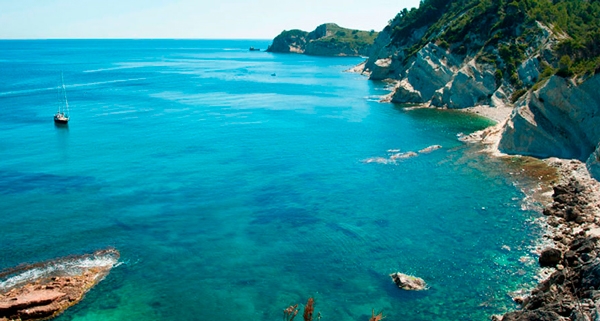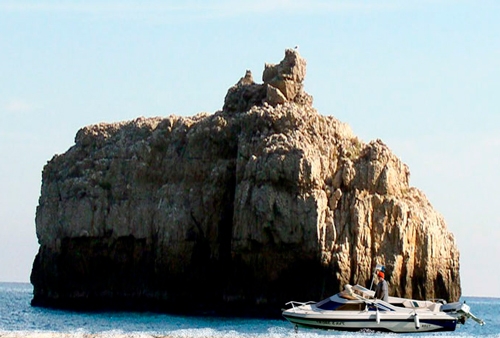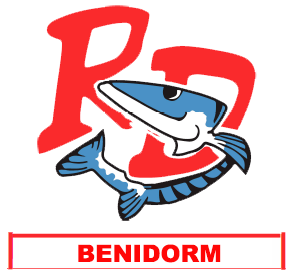[vc_row full_width=»stretch_row_content_no_spaces» css=».vc_custom_1507043670344{background-image: url(https://www.revolutiondive.com/wp-content/uploads/2016/06/Bautizo-Copy-e1506941579154.jpg?id=733) !important;}»][vc_column][trx_block top=»null» bottom=»huge»][vc_empty_space height=»33px»][trx_title color=»#ffffff» top=»large» left=»huge»]Jávea[/trx_title][vc_empty_space height=»1rem»][/trx_block][/vc_column][/vc_row][vc_row full_width=»stretch_row_content_no_spaces» inverse=»»][vc_column][trx_section title=»Jávea» bottom=»large»][vc_column_text css_animation=»bounceInLeft» css=».vc_custom_1514536620195{margin-left: 15px !important;}»]
The seabed of Jávea is one of the richest and most valuable enclaves of the Valencian Community.
The coastal seabed of Xàbia is one of the richest and most valuable enclaves of the Region of Valencia.
From the cliffs of Cap de Sant Antoni to the transparent waters of La Granadella, passing through the Calablanca, Cap Prim, Portitxol bay, Cap Negre, Cap de la Nau, Ambolo beach and l’Illa del Descobridor …, your
waters have attracted the interest of numerous social groups.
These sea beds are a faithful reflection of the varied topography of its coastline (cliffs, islands, rocks, beaches, coves).
This, together with the high quality and transparency of its waters, make this enclave of the Mediterranean an excellent place to practice scuba diving with bottles.
Cova Tallada
Without doubt one of the best places to snorkel. The Cova Tallada can be accessed by sea, being highly recommended to do it in kayak or canoe, or through trails through the Montgó.Once there we will enter the water from the same cave or from the other two windows in the wall that is open to the sea We found a turquoise bottom where the water is usually calm when forming a kind of protected pool of the open sea by a rocky tongue. The suggested route is to surround the interior of this area leaving the wall to our right.

Cala Tangó
The small cove of Tangó or Pope, as it is also known, is located to the left of the northern breakwater of the port of Xàbia. The access is not easy, since we have to walk on some rock blocks of the coastal edge under the terrace of the restaurant. The proposed route will take us to the wall that is to our left and during the way we will find some cliffs that protrude from the water. As we move away from the coast, the depth and size of the bottom stones increases little by little, until at -3 m. begin to make their appearance the first bushes of a leafy meadow of Posidonia oceanic.
Cala Blanca
Leaving behind the busy beach of L’Arenal and heading south, we reach Cala Blanca. If we continue walking about 300 m. more we will arrive at a second cove, chosen place for our marine journey. It is a small cove that has a point that is inserted as a rocky appendage in the sea. From here we can enter the water and discover a brilliant rock bottom. The depth is very small, -1 m., Although as we move away it will gradually increase. Once the point is turned and opening to the sea, you can access a lush meadow of Posidonia oceanica. If we get closer to the rocky tongue by the northern part, the sandy area returns and then again the wide rocky platform covered with algae.
The Barraca
La Barra de la Barraca is one of the coastal enclaves with more personality, not only of Xàbia but of the entire Valencian Community. In this small large cove of gravel and bowling, the possibilities of enjoying snorkeling are vast. We are going to choose the North zone of the cove. Once in the water we can see that the rocky platform is segmented, its continuity is interrupted by fractures that give the bottom a square appearance. As we go further into the sea, the platform gains depth in a soft veril for, in a moment, great rocks and tongues of rock appear, like submerged islets, that we can surround and that give way to areas of oceanic Posidonia and sand.
Cala Ambolo

To get to Ambolo we have to go to Cap de la Nau to the detour to the cove, which we access through Richard Wagner Street. Initially, there is a rocky bottom with medium-sized stones that, as we move forward, move in posidonia meadow and in dazzling sands. The proposed route consists of turning the islet that we find in the left zone, turning it around and recognizing the infinite points that will attract our interest, since the variety of funds allows an abundant biodiversity.
The Bay of Portitxol
Passed the island of Portitxol in the direction of Cap de la Nau we find a small islet, known as the Mona or Maria Claudia. In this dive we propose a circular route around it and it is convenient to anchor in front of it so that we stay in a southeasterly direction. After immersing ourselves following the anchor line we will find the entrance to a natural chimney at a depth of between 7 and 11 meters. In it windows are opened in which spectacular lighting effects are created. To the chimney however we will accede in the final section of the immersion; before we will go round the reef, whose walls descend progressively, in gentle slopes in some points and in abrupt cuts in others, offering hollows and covachas always full of life. The bottom is at a depth of between 15 and 22 meters and is sand with large rocks. It also extends a parallel rock tongue that can be traced back to the starting point. At this time we will access the fireplace with care that our fluttering does not cloud the water.
Cape of San Antonio Reef
Before reaching the Cap de Sant Antoni Lighthouse we will find an inlet in which a buoy announces the limit of the Marine Reserve. We can tie the boat to it and descend to about 16 meters deep, to a bottom formed by large scattered rocks and sand. Remember that this is a protected area and prior authorization is required for diving. In the same way, it offers an exceptionally beautiful and lively environment, prolix in species difficult to see in other points such as the sea cicada, the gilthead bream, the conger eel, the grouper and curious formations of white gorgonia. It also has the advantage that the irregular dispersion of the rocks and the moderate depth allow us to almost improvise any route; Anyway, our proposal is to gain depth in the opposite direction to the coast. Then, on the right, there will appear a large elongated rock formation that surrounds itself to continue heading 270º and we will find new rock formations where life abounds in the form of corvinas, brótolas or groupers.
Cabo de San Martín
This dive is located just behind the Cabo de San Martín, in a nook which here makes the orography of the area, is protected from the north winds and is perfect for beginners since the descent is done by the anchor line that It is only 6 meters deep. From here we will go in search of the same Cabo de San Martín where we will reach the maximum depth around the -22 meters, this dive is characterized by the large slopes that make the large rocks that make it up and it is usual to find ourselves in this area with slippers, lobsters, banks of breams and castanets and among the rocks there are many spirographs and sponges, to the delight of photographers.
Cabo Prim (Cave of the Virgin)
At the southern end of the Bay of Xàbia is the Cap Prim and, in front of it, an islet. We can anchor between both accidents in an area of 6 meters deep. From here we can gain depth to find, about 50 meters from where we have anchored, 2 entries on the ground that are the entrance to the Cave of the Virgin. You have to enter carefully to try not to remove particles from the bottom, as it would cloud the water and make it difficult to see. It is easy to find corvinas and broccoli. You can also see groupers, conger eels, moray eels, octopus and other species of dark areas such as kinglets. At the back of the cave there is a painted tile image of the Virgen de los Desamparados. The backlight from inside the cave is perfect for photographers – as long as they are the first to enter.
When leaving we will follow the wall and we will gain depth until reaching 22 meters. It is advisable to pay attention to the many holes in the wall as the presence of life is abundant and some lobster can be found. A few meters later you will find another tunnel with arches and beautiful backlights.
[/vc_column_text][vc_empty_space height=»1rem»][trx_title top=»large»]SITUATION / CONTACT[/trx_title][vc_empty_space height=»1rem»][vc_column_text]
[envira-gallery id=»1290″]
Revolution Dive Jávea
Calle Burdeos, 9
03730 Jávea – Alicante
Teléfono: 618 406 991
Email: reservas@revolutiondive.com
[/vc_column_text][vc_empty_space height=»1rem»][trx_title]HOW TO GET[/trx_title][vc_empty_space height=»1rem»][vc_column_text]
Xàbia has a wide range of communication possibilities, given that, due to its location, it benefits from a complete network of roads that connects the municipality with the rest of neighboring towns and the provincial capitals, Alicante and Valencia, some 100 kilometers away respectively.
To get to Xàbia by bus, Autobuses ALSA offers connections to Alicante, Valencia and Madrid, as well as to other municipalities on the route. From the neighboring city of Dènia, just 8 km. ALSA also connects with other cities such as Barcelona, Murcia, Granada, Almeria, Malaga, Algeciras, Seville, comprar-ed.com/viagra.html Córdoba, Albacete, Tarragona, Valladolid, León, Oviedo and Gijón.
Another option to get to Xàbia is the train. From the neighboring town of Gata de Gorgos we can take the TRAM that connects Dénia with Alicante. At about 45Km. to the north, in Gandía, we have a RENFE train station that allows us to connect in just one hour with Valencia.
To arrive by plane, the nearest airports to Xàbia are L’Altet Airport in Alicante, located at 100km and Manises Airport in Valencia, located at 113km.
From Alicante airport we can take the C6 line to the center of Alicante. From the airport of Valencia we connect with the center of the city with the metro.
Once in the center of both cities you can reach Xàbia with the aforementioned bus or train connections.
Free space in the diving center
[/vc_column_text][/trx_section][/vc_column][/vc_row]
